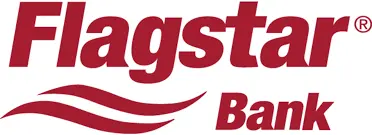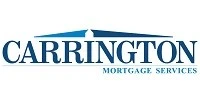VA Loan Guide: Eligibility, Lenders and How They Work
A VA loan is a type of mortgage backed by the U.S. Department of Veterans Affairs (VA), and it helps eligible military borrowers achieve their homeownership goals. Learn how VA loans work, find out who’s eligible and compare VA lenders to find your best fit.
Key takeaways
- VA loans are available to eligible veterans, active-duty military members and surviving spouses.
- VA loans don’t require a minimum down payment or mortgage insurance premiums.
- You can use a VA loan to buy, refinance, build or renovate a home.
How does a VA home loan work?
A VA loan is designed to make buying a home easier for military borrowers. Even though this mortgage type is backed by the U.S. Department of Veterans Affairs (VA), private lenders, such as banks and credit unions, issue the loans. VA loans generally have more lenient approval requirements than conventional loans, including no credit score or down payment minimums.
VA loan limits
There’s no maximum VA loan limit for borrowers with a full entitlement — your “entitlement” is a set amount that the VA reimburses to your lender if you default on the loan. With a full entitlement, you can borrow as much as you can get approved for without making a down payment.
VA loan rates
Right now, 30-year VA loan rates are 6.02%, while comparable conventional loan rates are 6.97%. Current average rates are calculated using all conditional loan offers presented to consumers nationwide by LendingTree’s network partners over the past seven days for each combination of loan type, loan program and loan term. Rates and other loan terms are subject to lender approval and not guaranteed. Not all consumers may qualify. See LendingTree’s Terms of Use for more details. VA loan rates are generally lower than conventional loan rates. Rates vary by lender and can fluctuate daily, which is why it’s important to shop around.

VA loan eligibility
To qualify for a VA loan, you typically must be one of the following:
- Service member
- Veteran
- Surviving spouse
You’ll also need to meet specific time-in-service requirements based on your military status. For example, you’ll likely have a longer time requirement if you’re in the National Guard or Reserves.
You may be eligible for a VA loan if you’ve served:
- 90 consecutive days of active duty during wartime
- 181 consecutive days of active duty during peacetime
- Six years in the National Guard or Reserves
Those who served between Aug. 2, 1990, and the present may have different minimum requirements to meet. Learn more on the VA’s website.
How to get a certificate of eligibility (COE)
To get a VA loan, you’ll need a document called a certificate of eligibility (COE). This form, issued by the VA, proves that your military service qualifies you for a VA loan. You can request your COE online, by mail or through your lender.

VA loan benefits and drawbacks
Benefits of VA loans include:
0% down payment: Unlike other mortgage loan types, VA loans typically don’t require a minimum down payment.
Lower interest rates: VA loan rates are generally lower than rates on other loan types, which can help you secure lower monthly payments and save money in interest.
No credit score minimum: The VA doesn’t set minimum credit score requirements, though many VA lenders require borrowers to have a 620 score or higher.
No mortgage insurance: Most low- or no-down-payment loan programs available to civilians require mortgage insurance, which covers lenders in case you default on your monthly payments. The VA doesn’t require mortgage insurance on any of its loan types.
VA loans come with many perks, but there are some drawbacks to keep in mind, including:
Service requirement: If you don’t meet the minimum service requirements discussed earlier in this article, you won’t qualify for a VA loan.
VA funding fee: The VA funding fee is unique to VA loans — it’s a one-time fee you’ll pay when you take out the loan. The amount ranges from 0.5% to 3.3% of the loan amount and depends on several factors, including whether you’ve taken out a VA loan in the past and your down payment amount.
Extensive appraisal process: A VA loan appraisal is more thorough than a conventional loan appraisal. In addition to verifying that the home’s value aligns with the loan amount, the appraiser will also check that the home meets the VA’s minimum property requirements.

Types of VA loans
VA purchase loan
A VA purchase loan is the VA’s standard mortgage offering. It allows eligible military members, veterans and surviving spouses to buy a home with no money down.
VA IRRRL
The VA interest rate reduction refinance loan (IRRRL) allows you to replace your current VA loan with one that features better terms. It’s also known as the VA streamline refinance, since it allows you to skip the VA appraisal and income documentation requirements of a regular refinance. Only existing VA borrowers can qualify for an IRRRL.
VA cash-out refinance
If you want to “cash out” some of your home equity (up to 90% of your home’s value), a VA cash-out refinance is an option. It involves replacing your existing VA mortgage with a larger loan and pocketing the cash difference. You can use the money for any purpose you choose, like home improvements or college tuition.
VA renovation or construction loan
If you want to buy a fixer-upper, a VA renovation loan could be a good option. These loans allow you to finance both the home’s purchase price and needed repairs in the same loan. Building a home from scratch is possible with a VA construction loan.
Native American direct loan
The Native American direct loan program can help qualifying veterans and their families buy, build or improve a home on federal trust land. This loan offers many of the same benefits as other types of VA loans, including no down payment or mortgage insurance requirement.
VA energy-efficient loan
If you want to make energy-efficient improvements to the home you’re buying (or refinancing), the VA also offers an energy-efficient mortgage program. You can generally finance up to $6,000 worth of improvements, which can include updates like installing solar panels, adding a solar water heater or installing a storm door.
VA manufactured home loan
A VA manufactured home loan offers military borrowers a lower-cost way to become a homeowner, but the requirements can be a bit strict. You can only get a VA loan for a manufactured home that’s permanently attached to land, meets local real estate zoning requirements and is classified as a real estate entity.
VA loan requirements
Credit score
VA guidelines don’t require a minimum credit score, but many lenders set their minimums at 620. However, you may find lenders, like Rocket Mortgage and Carrington Mortgage Services, who will accept scores in the 500s.
Income
Most lenders prefer a consistent, two-year job history, but may make exceptions at their discretion. You’ll want to keep an eye on your debt-to-income (DTI) ratio, which measures the amount of your monthly debt payments compared to your income. You’ll generally need a maximum 41% DTI ratio to qualify for a VA loan.
Down payment
As a VA borrower, you’re generally not required to make a down payment unless you want to. Sometimes, though, it makes good financial sense to put money down, as it can reduce your VA funding fee and total loan amount. The smaller the loan, the less you’ll pay in interest and the faster you’ll build equity.
![]() Learn more about deciding whether to make a down payment on your VA loan.
Learn more about deciding whether to make a down payment on your VA loan.
Property type
Any home financed with a VA loan must be “safe, sound and sanitary,” according to VA property guidelines.
VA loan closing costs
Compared to other loan types, VA closing costs are relatively low. Here’s a quick look at some of the costs VA borrowers can expect:
- Funding fee: The VA funding fee helps offset the cost of the VA loan program to taxpayers. It ranges from 0.5% to 3.3% of the loan amount and is typically rolled into the total loan amount, even if you don’t make a down payment. Disabled veterans may qualify for a funding fee exemption.
- Appraisal fee: Since VA appraisals are a bit more involved than conventional appraisals, they typically come with a slightly higher cost. VA appraisal fees vary by location and the type of property you’re financing. You can find your local average fees on VA.gov.
![]() Learn more about the different types of VA closing costs.
Learn more about the different types of VA closing costs.
How to get a VA loan
1. Shop around for a lender
You might need customer service tailored to someone deployed overseas, or simply want the most competitive interest rate offer — either way, choose a mortgage lender that caters to your needs.
2. Apply for preapproval
To get a VA loan mortgage preapproval, you’ll typically need:
- Certificate of eligibility (COE)
- DD214 (discharge or record of separation paperwork)
- Leave and earning statement (if you’re on active duty)
- Two years of W-2s
- Bank statements
- Letters of explanation for credit issues or large, unexplained bank deposits
3. Find a home and get it appraised
Once you find a home you want to buy, your lender will order your appraisal from a VA-approved inspector. Check the appraisal for any repair requirements and be prepared to negotiate with the seller if anything needs to be fixed.
4. Review closing documents and pay closing costs
The lender will issue your closing disclosure at least three business days before your closing date. That’s a great time to make sure you aren’t being charged a funding fee if you meet the exemption requirements. Once you pay your closing costs, the property title is recorded in your name and you’re officially a homeowner!
Explore VA lenders
Frequently asked questions
Yes, VA loans are assumable. This means a buyer — even if they’re nonmilitary — can take over an existing VA loan from the original borrower, including the existing terms and interest rate. The buyer will still need to meet the lender’s requirements.
You can use your VA loan benefit as often as you wish, as long as you have sufficient entitlement to buy a home and are purchasing a primary residence. Your VA loan entitlement is a lifetime benefit.
No, VA loans don’t require private mortgage insurance (PMI) or any other type of mortgage insurance. However, you are required to pay a one-time VA funding fee, which can range from 0.5% to 3.3% of your loan amount.
It is possible to refinance a VA loan. The most common VA refinancing programs are the VA IRRRL refinance, which is best if you’re looking to secure a lower rate. You can also use the VA cash-out refinance program, which can help you tap your home equity to use for emergency expenses or home repairs.
Several factors can disqualify you from getting a VA loan, including if you:
- Fail to meet the military service requirement
- Have too low a credit score or too high a DTI ratio
- Attempt to finance a property that doesn’t meet the VA’s safety standards







